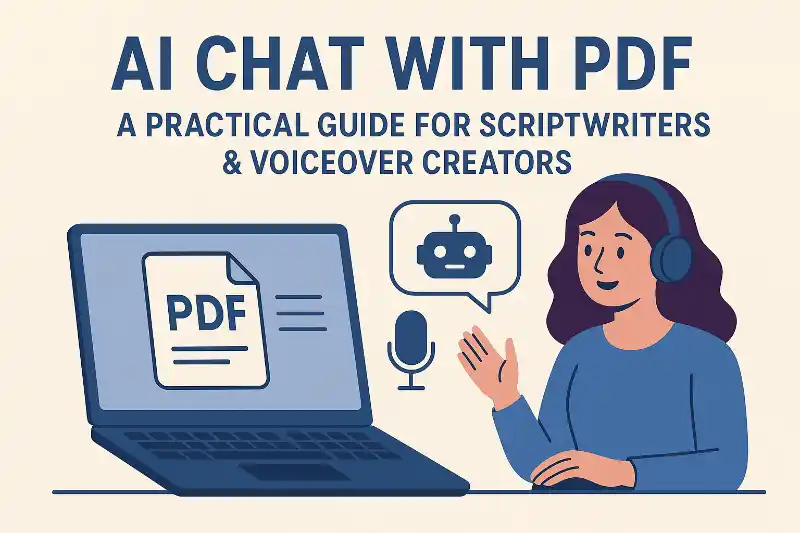Understanding Synthetic Speech Intelligibility Metrics for Enhanced AI Voiceovers
Introduction to Synthetic Speech Intelligibility
Did you know that ai can now mimic human speech so well that it's hard to tell the difference? (Is there something special about the human voice?) Understanding how clear and understandable this synthetic speech is, becomes increasingly important. So, what exactly is synthetic speech, and why should you care about its intelligibility?
Synthetic speech is essentially ai-generated audio that sounds like human speech. It's typically created using text-to-speech (TTS) engines, which convert written text into spoken words. Synthetic speech intelligibility refers to how easily people can understand this ai-generated speech. It’s crucial that ai voiceovers are clear. If the message is garbled or confusing, the whole point of using a voiceover is lost.
- Clear Communication: Intelligibility ensures the message is accurately conveyed. This is especially important in fields like healthcare, where misunderstandings can have serious consequences.
- Engagement: When voiceovers are easy to understand, people are more likely to pay attention. Think about e-learning modules; if the narration is unclear, learners will quickly lose interest.
- Accessibility: Intelligible synthetic speech makes content more accessible to diverse audiences. This includes non-native speakers or individuals with auditory processing issues.
The clarity of ai voiceovers has a direct impact on user experience and information retention. (The Voice Quality Gap: Why AI Audio Still Breaks the Magic - LinkedIn) Poor intelligibility can lead to disengagement and negative perceptions of your brand.
- User Experience: In video narration, clear audio enhances the viewing experience, while in podcasting, it keeps listeners tuned in. If the audio is poor, viewers or listeners may tune out.
- Information Retention: People remember information better when it’s presented clearly. For example, in e-learning, intelligible narration helps students grasp complex concepts more effectively.
- Brand Perception: A lack of clarity can make your content seem unprofessional, potentially damaging your brand. Clear, understandable voiceovers project competence and attention to detail.
Ultimately, investing in high intelligibility ensures your message is heard and understood, which is essential for effective communication. The next step is to explore the metrics we use to measure how well synthetic speech performs.
Key Metrics for Evaluating Synthetic Speech
Did you know that the clarity of synthetic speech can be measured in ways similar to how we test hearing? (Measuring Speech Recognition With a Matrix Test Using ...) Let's dive into the key metrics that help us evaluate just how intelligible these ai voices really are.
When it comes to measuring synthetic speech, we use two main types of metrics: subjective and objective. Subjective metrics rely on human evaluation, while objective metrics use algorithms to predict intelligibility. Each has its own set of advantages and disadvantages.
Subjective metrics, like Mean Opinion Score (MOS) ratings and listening tests, involve real people listening to and rating the quality of the synthetic speech. MOS assigns a score (e.g., from 1 to 5) based on perceived quality. Listening tests might ask participants to transcribe what they hear, measuring word accuracy.
- Pros: Subjective metrics directly reflect human perception.
- Cons: They can be time-consuming, expensive, and influenced by listener bias.
Objective metrics use computational models to predict how well humans will understand the speech. Examples include the Speech Transmission Index (STI), Word Error Rate (WER), and Short-Time Objective Intelligibility (STOI).
- Pros: Objective metrics are quick, consistent, and cost-effective.
- Cons: They may not perfectly capture the nuances of human perception.
Objective metrics offer a detailed, algorithmic view of synthetic speech intelligibility. Here are a few key examples:
- Speech Transmission Index (STI): This metric measures how well speech is transmitted through a channel, considering factors like noise and reverberation. Nti-Audio provides an application note explaining the principles behind STI and its optimized version, STIPA.
- Word Error Rate (WER): WER calculates the number of errors (substitutions, insertions, and deletions) in speech recognition compared to the original text. Lower WER scores indicate higher accuracy.
- Short-Time Objective Intelligibility (STOI): STOI predicts the intelligibility of speech, especially in noisy conditions. STOI values range from 0 to 1, with higher values indicating better intelligibility.
- Hearing-Aid Speech Perception Index (HASPI): HASPI predicts speech intelligibility for listeners with hearing impairments, simulating the effects of hearing aids.
Signal-to-Noise Ratio (SNR) is a vital factor in speech intelligibility. It quantifies the level of the desired speech signal relative to background noise. A high SNR means the speech is much louder than the noise, making it easier to understand.
- Impact: Higher SNR generally leads to better intelligibility.
- Measurement: SNR is measured in decibels (dB).
- Optimization: In synthetic speech, engineers optimize SNR by reducing background noise and enhancing the speech signal.
To ensure effective communication, maintaining an adequate SNR is essential. The ambient noise correction has to be applied when the signal-to-noise ratio is lower than 15 dB in any octave band which affects the speech intelligibility.
The speech intelligibility shall be measured at the announcement level. The announcement level shall exceed the ambient sound pressure level by a minimum of 10 dB. -Nti-Audio
Understanding these metrics is the first step in creating ai voiceovers that are not just understandable, but genuinely effective. Next, we'll consider the factors that affect synthetic speech intelligibility.
Factors Affecting Synthetic Speech Intelligibility
Did you know that the way a voice sounds can significantly impact how well it's understood? Several factors influence how clear synthetic speech is, and understanding these can lead to better ai voiceovers. Let's explore the acoustic characteristics, TTS engine quality, and language considerations that affect intelligibility.
The acoustic properties of synthetic speech play a crucial role in its clarity. Fundamental frequency (F0), speech rate, and articulation precision are key elements that can be adjusted to enhance intelligibility. Manipulating these characteristics can make ai-generated speech sound more natural and easier to understand.
- Fundamental Frequency (F0): Varying the F0, which is the rate at which a speaker's vocal cords vibrate, can add emphasis and emotion to speech. A dynamic F0 can make the speech sound more engaging and less monotonous.
- Speech Rate: Adjusting the speed at which words are spoken is critical. Speaking too quickly can make the speech difficult to follow, while speaking too slowly can make it sound unnatural.
- Articulation Precision: Clear and crisp enunciation of each word is essential for intelligibility. Ensuring that each phoneme is distinctly pronounced helps listeners differentiate between similar-sounding words.
Different TTS engines have varying levels of intelligibility. Platforms like Amazon Polly, Microsoft Azure, and Google TTS each use unique algorithms and voice models. Advancements in ai and deep learning are continually improving the quality of these TTS engines.
When selecting a TTS engine for specific applications, consider the following:
- Voice Options: Some TTS engines offer a wider range of voice options and styles.
- Customization: The ability to adjust parameters like pitch, speed, and emphasis.
- Integration: Ease of integration with existing systems and workflows.
Language-specific phonetics significantly impact intelligibility. Synthesizing speech in different accents poses unique challenges. Optimizing intelligibility in multilingual content requires careful consideration of these factors.
- Phonetic Differences: Each language has its own set of sounds and pronunciations.
- Accent Variations: Accents can significantly alter the way words are pronounced.
- Multilingual Optimization: Ensuring that synthetic speech is clear across different languages.
Understanding these factors is essential for creating effective and engaging ai voiceovers. Next, we'll explore how to optimize synthetic speech for specific use cases.
Improving Synthetic Speech Intelligibility: Practical Strategies
Is your ai voiceover sounding a little off? You can significantly improve synthetic speech intelligibility by using a combination of script optimization, TTS engine adjustments, and post-production techniques. Let's dive into some practical strategies.
The foundation of intelligible synthetic speech begins with a well-crafted script. Clear and concise language is paramount to avoid confusion.
- Use clear and concise language. Avoid jargon and complex vocabulary, which can be difficult for TTS engines to pronounce correctly.
- Avoid complex sentence structures. Keep sentences short and direct. This helps the TTS engine maintain a natural flow.
- Incorporate natural pauses and intonation cues. Use punctuation strategically to guide the TTS engine's pacing and emphasis. For example, commas, periods, and question marks all affect how the engine delivers the speech.
Once you have a well-written script, the next step is to fine-tune the TTS engine itself. Many TTS platforms offer adjustable parameters that can significantly impact intelligibility.
- Adjust speech rate, pitch, and volume for optimal clarity. Experiment with slightly slower speech rates, as this often improves comprehension, especially for complex content.
- Experiment with different voice options to find the most intelligible one. Some voices are simply clearer than others, even within the same TTS engine.
- Use SSML (Speech Synthesis Markup Language) for advanced control over speech output. SSML allows you to specify pronunciation, emphasis, pauses, and other nuances that can greatly enhance intelligibility.
Even with a well-optimized script and TTS engine, post-production can further refine synthetic speech. Basic audio editing techniques can improve clarity.
- Noise reduction and audio cleanup. Remove any background noise or artifacts that could interfere with intelligibility.
- Equalization (EQ) to enhance speech frequencies. Boost the frequencies where human speech is most prominent (typically between 250 Hz and 4 kHz).
- Compression to improve dynamic range and perceived loudness. Compression reduces the difference between the loudest and quietest parts of the audio, making the speech sound more consistent and easier to hear.
"Evaluating synthesized speech intelligibility in noise" a 2025 study found that synthesized voices have a similar intelligibility range to human voices. Some synthesized voices were more intelligible than human voices.
These practical strategies will help you create ai voiceovers that are not only understandable but also engaging and effective. Next, we'll explore how to tailor synthetic speech to specific use cases.
Leveraging AI for Intelligibility Enhancement
Is your ai voiceover not quite hitting the mark? Ai offers powerful tools to enhance synthetic speech intelligibility. Let's explore how you can leverage ai to create clearer and more effective ai voiceovers.
Discover Kveeky, the ai voiceover tool that turns scripts into lifelike voiceovers with ease. Kveeky offers ai scriptwriting services for creating clear and effective scripts.
- AI Scriptwriting: Kveeky's ai scriptwriting services ensure your scripts are optimized for clarity. They do this by identifying complex phrasing, suggesting simpler alternatives, and incorporating natural pauses, which are essential for intelligibility.
- Multilingual Voiceovers: Reach a global audience with voiceover services in multiple languages. Kveeky provides voiceover services in multiple languages to connect with a global audience.
- Customizable Voice Options: Transform your content with Kveeky's customizable voice options. Kveeky allows you to tailor the voice to match your content and audience. For example, you can adjust pitch range, vocal timbre, and emotional expressiveness to enhance intelligibility.
- Text-to-Speech Generation: Enhance speech intelligibility with text-to-speech generation. Kveeky optimizes text-to-speech for enhanced clarity.
Automatic Speech Recognition (ASR) systems can be used to evaluate the performance of downstream applications that rely on synthetic speech, indirectly reflecting intelligibility. ASR provides a data-driven approach to refining TTS engine parameters and script writing techniques.
- Objective Measurement: ASR systems provide an objective way to measure how well synthetic speech is understood by a recognition system. This removes potential human biases.
- Feedback for Refinement: Use ASR feedback to adjust settings in TTS engines and improve script writing. ASR helps fine-tune your voiceovers.
- Achieving Superhuman Intelligibility: Optimize synthetic speech to achieve human-level or even superhuman intelligibility. ASR driven optimization can lead to exceptional clarity.
Machine learning is set to play a key role in developing more adaptive and intelligible TTS systems. Ai can personalize voiceovers based on listener characteristics, making content more engaging.
- Adaptive TTS Systems: Machine learning is driving the development of TTS systems that adapt to different content and audiences. These systems will dynamically optimize speech for maximum clarity.
- Personalized Voiceovers: Ai can personalize voiceovers based on listener characteristics. Factors such as age, language proficiency, and hearing ability can be considered.
- Real-Time Enhancement: Emerging technologies offer real-time intelligibility enhancement in noisy environments. This ensures clear communication, regardless of background noise.
"Evaluating synthesized speech intelligibility in noise" a 2025 study found that synthesized voices have a similar intelligibility range to human voices. Some synthesized voices were more intelligible than human voices.
Harnessing the power of ai, you can create synthetic speech that is not only intelligible but also highly engaging and effective. Next, we'll explore real-world examples of intelligibility improvements.
Case Studies: Real-World Intelligibility Improvements
Can synthetic speech truly rival human speech in real-world applications? Let's delve into specific scenarios where improvements in synthetic speech intelligibility have made a tangible difference.
Consider how e-learning modules benefit from enhanced synthetic speech. Improved intelligibility ensures clear communication, which directly impacts student engagement and learning outcomes. Clear audio helps students grasp complex concepts more effectively, leading to better information retention.
Metrics such as student test scores and module completion rates can measure the impact of intelligibility improvements. Analyzing feedback from student surveys also provides insights into perceived clarity and engagement. This data-driven approach helps refine e-learning content creation.
Adapting synthetic speech for diverse languages and accents is crucial for video content aimed at global audiences. Strategies include adjusting phonetic parameters and selecting voices that resonate with specific cultural nuances. Intelligibility directly influences video completion rates and audience satisfaction.
Tools like SSML (Speech Synthesis Markup Language) enable fine-grained control over pronunciation and intonation. These techniques ensure that video content is both accessible and engaging for viewers worldwide.
Using synthetic audio with a high Speech Transmission Index (STI) is particularly beneficial in noisy environments. High STI ensures that podcast content remains intelligible, even with background noise. This can improve listener engagement and overall satisfaction.
According to "Measuring Speech Intelligibility with Romanian Synthetic Unpredictable Sentences in Normal Hearing," speech intelligibility is better measured by the signal-to-noise ratio (SNR), which is the difference in intensity between speech presentations and noise, rather than by the absolute value of recognition thresholds. High STI audio enhances podcast audio enhancement in any environment.
By examining these real-world examples, we can see how the principles of synthetic speech intelligibility translate into practical improvements. Next, we'll look at the conclusion and the future of intelligible ai voiceovers.
Conclusion: The Future of Intelligible AI Voiceovers
Ai voiceovers are rapidly improving, but what does the future hold? Let's explore key metrics, tech advancements, and the journey toward human-like ai speech.
- Intelligibility metrics such as STI and WER will remain crucial for evaluation.
- Script optimization and TTS adjustments will further boost clarity.
- Expect continual advancements in ai speech, blurring the line with human voices.
The pursuit of truly human-like synthetic speech is ongoing, and with continued research and development, we can anticipate even more natural, engaging, and perfectly intelligible ai voiceovers in the years to come.





